Of all the pests we deal with, bed bugs are definitely one of the most disgusting. Sure, roaches and spiders are nasty, but the last place you want to have bugs is where you sleep. These little parasites will literally feed on you while you sleep, and they can leave some nasty looking bite marks that can last for weeks.
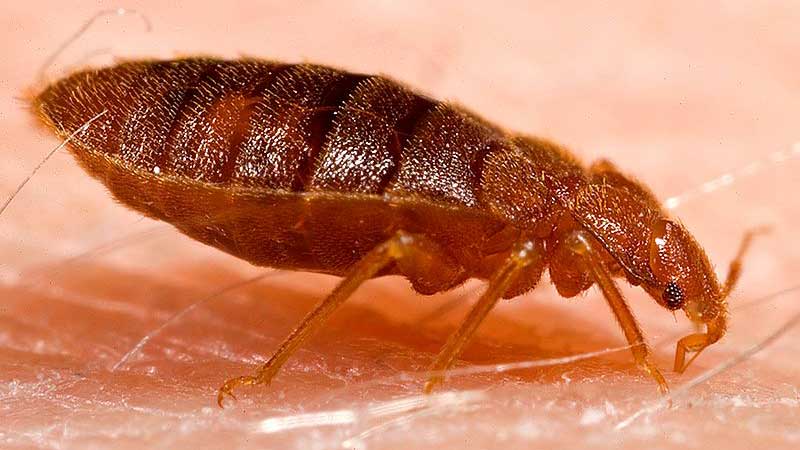
This article will solely be dedicated to the eradication bed bugs and the best bed bug killers on the market! We’ll be covering exactly what a bed bug is, how they come to infest your sleeping quarters, and most importantly, how to kill them all!
What is a Bed Bug?
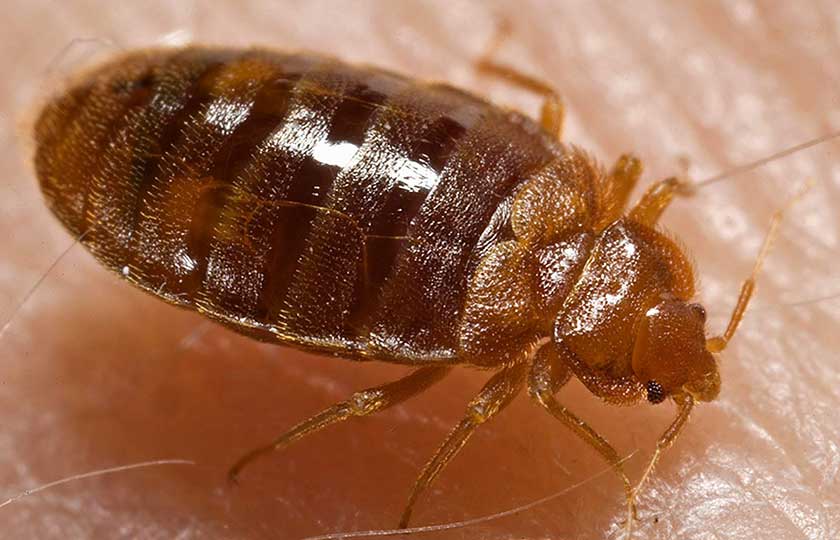
Cimex Lectularius are tiny somewhat oval-shaped insects that cannot fly (despite having wings) whose primary nutrient source comes from warmblood found in humans and animals. They typically range in the 5mm-7mm size and are almost always found as a reddish light brown color. They have an average lifespan of 4-6 months but have the capability to survive much longer!
These insects rely on other living creatures to feed off of and since they are skittish and nocturnal, they seem to take a particular interest in hiding where humans lay fast asleep. They’ll bite whatever skin is exposed and since the bite is virtually painless, the victim won’t awake until the pest has gotten a full tummy and scurried off!
Bed bug infestations can happen quickly and can be identified by eggs or shells of eggs, fecal matter, and the remnants of the skin they have shed. An easy rule of thumb to determine whether or not you’re being infested by bed bugs is simple. If you see more than one, it’s safe to assume there is an active infestation and you must act quickly! As the infestation spreads, it only gets more difficult to stop. Remember, bed bugs like to hide from you and are primarily active only late at night when you’re asleep!
Here are the Best Bed Bug Killers – Updated to 2023
1. The second year in a row our top option is: Eco-Defense Bed Bug Killer
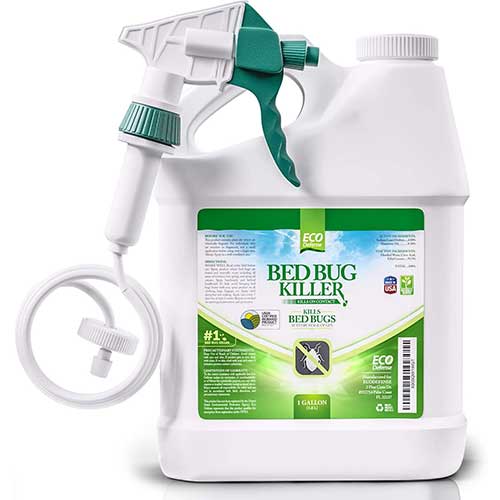
The eco-Defense bed bug killer is another heavy hitter in the bug slaying department, with a twist! They prefer organic solutions that are non-toxic to eliminate bed bugs on contact! No fumes, no worries about pets becoming poisoned, easy to apply. Why not give it a shot? It’ll come with an easy to use spray system and a money-back guarantee!
The real truth is, this is one of the best products that won’t harm other beings in your immediate area, however, it has little to no lasting effect. To work, the bug must be directly sprayed. Perfect if you’ve just spotted a few and want to crack down on them but not so great if you have a full-on infestation or an outside source providing constant exposure to bed bugs.
The pros are that it is an and Organic formula and is non-toxic. Cons are that it does not offer passive protection and bugs must be sprayed directly.
2. Rockwell Labs Cimexa Bed Bug Powder
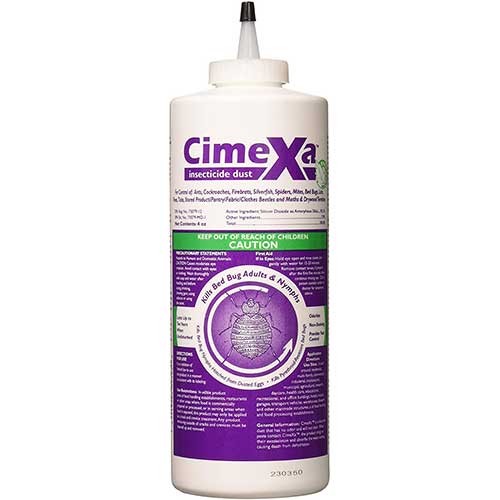
Cimexa is silica-based bed bug dust that essentially dries out the protective wax covering on the bed bugs shell. This dehydrates the bed bugs which leads to their death. What you’ll get is a bottle that acts as a “puffer” and basically spews out dust that, undisturbed, can last for up to 10 years! This is one of the best passive anti-bed bug treatments on the market today and although it doesn’t kill them right away, it is extremely viable and successful. Its one of the safer alternatives and can be used in pet areas, on mattresses, carpets, etc. Another good silica gel bed bug killer is Harris Resistant Bed Bug Powder.
The pros are that it has am extreme 10-year viability and that dust based solutions are the new age of insect extermination. Cons are that it is inhalable when applying and a mask is recommended
3. Harris Diatomaceous Earth Bed Bug Killer
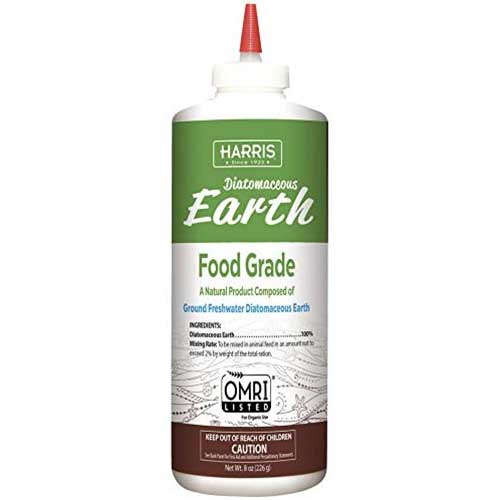
Diatomaceous earth is essentially a microscopic dust shard that becomes lodged inside a bugs critical body parts, slashing and gouging them every time they move and eventually killing them. This is an all-natural and effective alternative to deadly chemicals. It sounds like a horrible death and it probably is, but hey, our alternatives are smashing them or using toxic chemicals on them so… whatever works, right? And “work” it does. This stuff will kill just about any insect you apply it to.
Harris has been able to create a “food grade” version of one of the most lethal bed bug killers ever to hit the market. The product comes in a puffer tip configuration which allows you to apply the product easily.
Aside from killing stuff, you can use this as a dietary supplement. Who knew you’d be able to end the life of organisms AND benefit the lives of other organisms with the SAME product?
The pros are this is a multifunctional product that is completely safe to use in the home.
4. Harris Black Label Bed Bug Killer
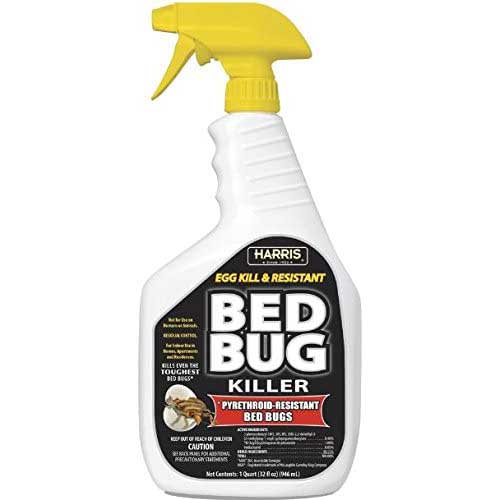
Harris Black label bed bug spray is good to use when fighting bed bugs that are resistant to other methods! It doesn’t have an issue with bugs building resistance to it and it’s completely odorless! Other chemicals I’ve tried typically require a bit of time to work but this spray can knock bugs down in seconds, making cleaning them up and confirming their kills to be especially easy! You can use this spray as a preventive measure as well due to its application time lasting up to 16 weeks.
Remember, if these sprays can kill bugs, they probably aren’t safe for pets or small children either so use responsibly! This product is EPA registered under 1021-2597-3 which means it’s approved for usage in the home with people and pets but be careful. Harris is the oldest EPA registered company and has been developing anti-bug infestation solutions since 1924.
The pros are it comes in an easy to use spray bottle delivery and kills bugs in seconds. Cons are that it can not be used on clothing, pillows, etc.
Related Article: Best Bed Bug Sprays
5. Bedlam Plus
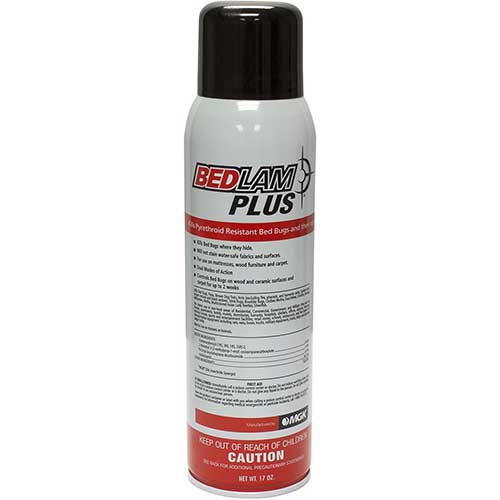
Bedlam Plus is a purpose-built bed bug aerosol that is capable of killing pyrethroid-resistant critters! This spray uses a combination of kill on contact and residual repelling characteristics. Spray once and you’re good to go for several months!
It also won’t stain water-resistant materials such as the bed encasements mentioned earlier in this article.
The pros are that it is much stronger than the everyday OTC formulas. Cons are that it can stain materials that aren’t water-resistant and that it comes in small quantities so depending on how big the problem is multiple cans may be needed.
6. Trapper MAX Glue Traps
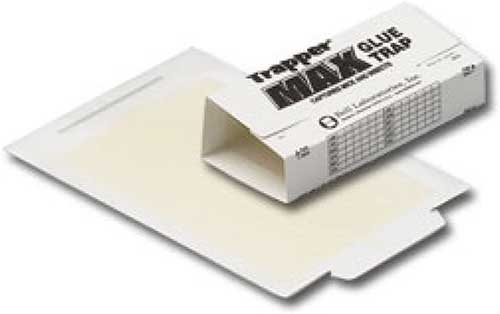
Trapper Max Glue traps are great for catching bed bugs. Just about any sticky trap on the market that is capable of killing something will work for bed bugs, even the ones you buy for mice. This is one of my favorites but keep in mind that most of these are fairly similar.
All of these little glue trap sticky contraptions will do about the same job. I’m not going to waste your time and tell you how this one is significantly better than the rest. There are a few different designs that may vary based on your needs. I like this one because it’s foldable, allowing me to use it around the bottom of bedposts. It’s also got peanut butter scent to lure in those pesky bed bugs which, isn’t a proven method, but it does seem to work surprisingly well catching a wide variety of pests!
I will say, however, that using a sticky trap WITH other forms of bed bug assaults works pretty well. You’ll also be able to gauge whether or not your other methods are working by seeing how many are caught with each trap.
The pros are that it is non-toxic. Cons are that it is only effective if your placement is good
Related Article: How to Get Rid of House Centipedes
7. Ortho Bed Bug Trap to Detect and Lure Bed Bugs
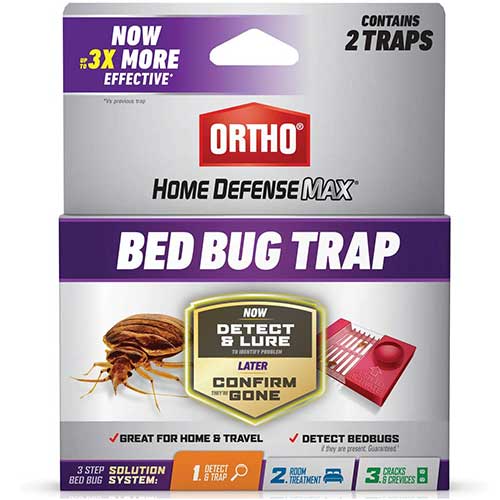
The Ortho Home Defence Max bed bug trap served two purposes. First, it acts as an insect trap to catch and kill bed bugs. Second, it allows users to determine if there is a bed bug problem. If you suspect there may be bed bugs in luggage or around the house set this trap to find out. The clear window of the trap lets users see what they catch. If there are lots of bed bugs then you can use sprays or powders to get rid of them in the area.
8. Black Light to Detect and Kill Bed Bugs
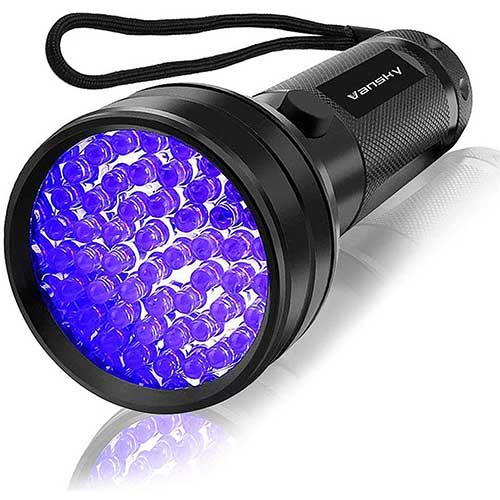
A black-light can be a good way to spot bed bugs but the light itself does not kill them. Using a black light is a good way to find stains and bed bugs and get them cleaned up. Bed bugs are good at hiding in small crevices so a black light can be helpful to find them. Make sure to use traps, sprays, or powders to actually kill the bed bugs once they are spotted in the area.
9. Sleep Defense System Mattress Encasement for Bed Bugs
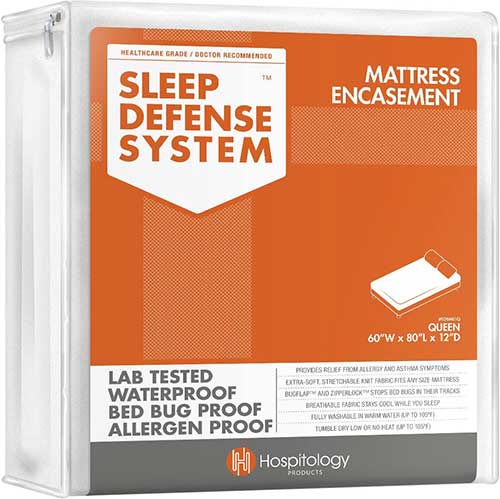
This sleep defense system mattress encasement is bed bug proof, waterproof, and allergen-proof. Hospitology is a company that has been involved with mattress encasements from the very beginning and have fine-tuned their craft to offer some of the best options with the most functionality. These are 100% waterproof, protecting your mattress from… yeah, whatever “liquids” come there way. As far as zipper systems go, this one utilizes a flap that covers where the zipper ends, ensuring there’s no space left over for little buggers to slide in.
These encasements are designed and constructed of 100% extra-soft polyester knit which has proven to be one of the top materials used in mattress encasements against bed bugs. Furthermore, it’ll come with a 5-year warranty!
The pros are that it protects your mattress from all bugs, dust, and water. It comes with a 5-year warranty. Cons are if you damage it, it is basically useless in terms of bed bugs
10. SafeRest Bed Bug Mattress Encasement
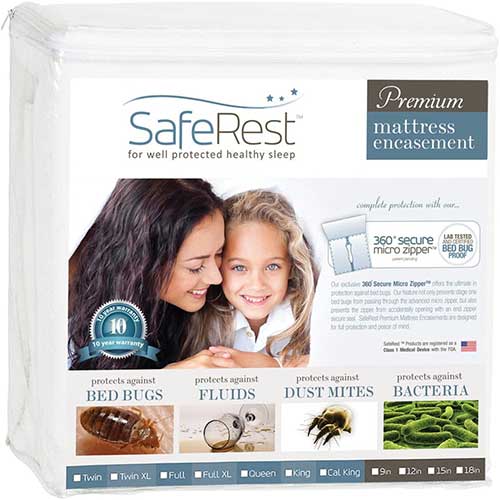
The premium mattress encasement protects against bed bugs, fluids, dust mites, and bacteria. SafeRest has brought to use a soft vinyl-free mattress encasement solution that works incredibly well in keeping you bite-free throughout the night. They use a micro zipper which is too small for any of the buggies to fit through and the 360 Secure Zip closing feature allows you to safeguard your zipper from moving with a velcro flap.
As opposed to the Hospitology offering, this one is constructed of cotton and feels a bit thicker. Both are good options and it really comes down to which material you personally prefer. SafeRest has some very good products that will aid you in the war on bed bugs nicely. They’re also waterproof, dustproof, etc so they should help with allergies and preventing accidental spills from destroying your perfectly white mattresses!
The pros are this is purpose-built to protect your mattress from bugs, liquids, and dust. Cons are that the product comes with a slight smell, so you might want to wash it before use.
Bed Bug History
Bed bugs have always been found in basically all parts of the world that aren’t exposed to freezing temperatures for the majority of the year. They tend to thoroughly enjoy 70F – 80F, which is the ideal temperature for their breeding and development. However, they can be found in basically any type of climate and have been shown to be quite resilient to extreme temperatures.
After World War II, most of the US along with other developed countries were able to lower the population of bed bugs significantly with the use of the highly controversial substance called DDT. Countries that didn’t have access to strong pesticides were still plagued by bed bugs, even today!
Despite the US greatly reducing the number of bed bugs in the 1950s, bed bugs have made a rampant comeback. This miraculous comeback can be attributed to several things including immigration from bed bug-infested countries, animals carrying them, crowded living quarters and built up immunity to chemical pesticides. It’s also in theory that more Americans are finding themselves moving more often, putting them at greater risk for transmitting bedbug infestations than before.
Why Are Bedbugs Bad?
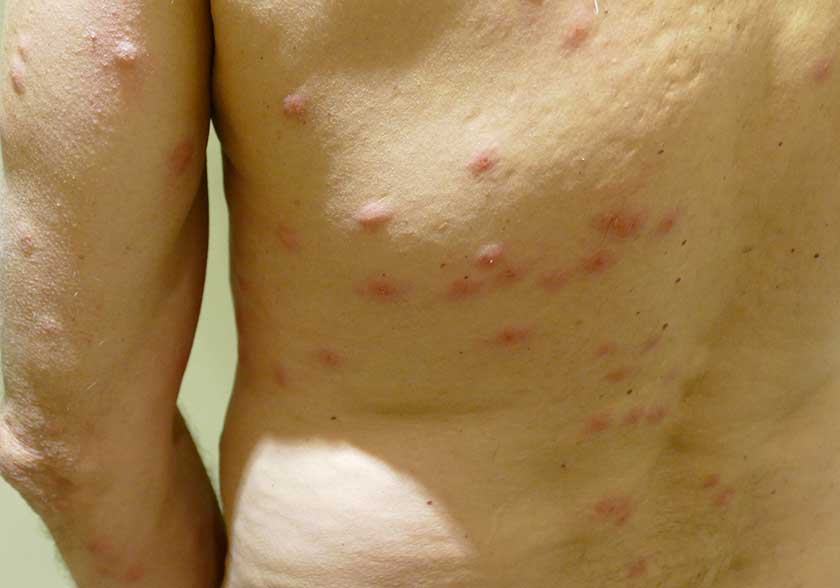
Bedbugs are very similar in nature to mosquitoes. They don’t have a long list of direct dangers to humans and their bites tend to leave a small red spot that may be itchy at worst. The itchy side effects can easily be ignored or treated with an antihistamine, steroid creams, or natural remedies. These bites only last a few days and after they’re gone, there are no long-lasting dangers.
The real problem comes into play when the bugs that are biting us are infected with a virus or other diseases. Thus far, there are little to no known reported cases of people dying from a bedbug bite and/or infection, however, we know that any insects that feed off of human blood have the potential of spreading disease which makes them particularly and potentially dangerous. Aside from being dangerous, these bugs are downright nasty! They can leave blood-stains on your sheets and furniture and of course, they don’t have the manners to use the toilet!
Bedbugs can reproduce extremely quickly and enjoy living in colonies together. They can also hide away in clothes or really any fabric material for several weeks at a time, making them easy to transmit to other areas. It’s difficult to fully insure all of your belongings aren’t home to a bedbug or two before moving into a new living situation and once bedbugs get their footing in a new place, it’s very difficult to fully remove all of them!
If you have any furry critters that are a part of the family, you’ll need to beware of their adventures outside of the walls of your home! Good old’ Fiddo can roll around outside, collecting bedbugs in his fur coat and then unknowingly gives them a free Uber ride to your home!
Pre-Treatment Bed Bug Ritual
Before spraying everything down, stomping them all to death, lighting the house on fire (not recommended), etc, there are a few things we need to get squared away!
The first and probably the most obvious is to reduce clutter and clean the place up! It’s observed that cluttered and dirty living quarters house a significantly higher population of bedbugs and have a much higher chance of attracting them! Make sure all of your food is sealed up tight and run everything through the laundry machine (maybe twice). Water over 120F will almost always kill bedbugs so ensure you’re washing your clothes on high heat settings. If you have garments or fabrics that don’t take kindly to hot water washing, try pressing them, putting them in a clothes drier, or using an iron to heat them up and ensure no bedbugs are left hiding.
After you’ve cleaned up the place and washed your fabrics in hot water, the next thing on the list of pretreatments is to completely strip down your bed and dismantle the bed frames. Bed frames are a prized home for bedbugs. My personal suggestion for if your box spring and frame are infested would be to simply throw them out and replace them with new ones after you’ve ensured your home is bedbug free of course! There are also special encasements you can use to put over your mattress that inhibits the ability of bedbugs to enter and/or exit.
Bed Bug Treated Mattress Liners
I’m gonna make this quick and painless. They don’t really work and I don’t recommend spending money on them. You can try them if you like, but encasing your mattress and using the proper chemicals should do the trick just fine.
Basically, Bed Bug treated liners are soaked in bug repellant and are supposed to kill the bugs if they come into physical contact with the liner. This doesn’t work, though, as most chemicals need to be ingested and/or inhaled in high amounts of concentration. The extremely small amounts used on these liners just aren’t enough to kill all of the bed bugs that touch it.
Mattress Encasements
A mattress encasement is basically a glove for your mattress that completely seals inside the mattress from the outside world. They are typically multifunctional, meaning they are designed to safeguard your mattress from many things, one of those being bed bugs. They won’t “kill” the bed bugs if you already have them, but they will trap them inside, eventually killing them off and warding off future invaders. Mattress encasements also make it easier to spot bed bug infestations and they make cleaning up after a mess much easier!
Mattress encasements alone will not rid your home of bed bugs but they will delete one of the best places for them to reproduce and develop and likely the most unfavored place for them to be!
I’ll add a few of our recommended mattress encasements in the product guide as I truly believe an ounce of prevention equals a pound of treatment!
Mattress zippers
Not all mattresses are created equal and I’m sure your back can attest to that! The same goes for mattress encasements. When encasements were first designed, they were made out of a tough vinyl material that performed its job well, however, leaving the mattress feeling hard and slippery. Since then, tons of options that aren’t vinyl and are much softer have hit the market. Some are great, some are junk.
Obviously, being durable against ripping is a huge factor to consider, but most people discount the design of the zipper. After all, if a zipper zips, it works, right? No their are major differences. The zipper has to come to an end of its track eventually and in the case of most regular zipper systems, there’s a very small opening where the end of the track is sewn into the fabric. This opening is more than enough for bed bugs to slip in, rendering the entire idea of getting a mattress encasement useless!
Make sure the zipper closes 100% of the gap. Easy enough, right? Well, it gets a little more complicated as traditional zippers aren’t very good at staying where they were left. The best mattress encasements utilize a system to hold the zipper in place. Whether that be a hook, a claw, a magnetic piece, or a lock on the zipper track itself, your mattress encasement should have something to prevent the zipper from moving around!
Other Bed Bug Locations
Dresser drawers and closets are also another favorite hiding spot for bedbugs. Removing your drawers and scrubbing your dresser down is absolutely key in finding all of these little buggers. Use a vacuum with a hose attachment to get all of those cracks and hard to reach places. The vacuum may not eradicate all of the pests on its own but it will clean the area up, making our pesticides penetrate more efficiently.
Remember, contrary to their name, bedbugs rarely just hide inside of your bed alone and can most definitely take over other parts of your home as well, including inside of electronics! Bedbugs are very difficult to get rid of completely and require complete attention to every single inch of your home.
As a final precaution to both the future and the present, sealing up all the holes into your house should ensure that once you’ve killed them all off, they won’t be able to come crawling back in. Find out where pipes and wires are entering your home and ensure their entry points are completely sealed up! You can use calk to do this which is fairly inexpensive.
Pyrethrins and Pyrethroids for Bed Bugs
Some of the most common compounds used in pest control are botanical insecticides derived from chrysanthemum flowers. Plants and flowers have been using these chemicals for many thousands of years to protect themselves from pesky invaders, why shouldn’t we?! To clarify, pyrethrins are the synthetic version of pyrethroids but work essentially the same. They’re highly lethal to bedbugs and aid in flushing them out of their hiding spots but are also susceptible to bedbug mutations, rendering certain pyrethroids useless in some cases.
Desiccants:
Chemicals in this classification actively degrade the bedbug’s protective shell. This will dehydrate the bugs and cause death over a bit of time. This type of pesticide is impossible thus far for bedbugs to create resistance to which makes them hold a very high level of success. The downfall to using these chemicals is that they don’t kill instantly and thus allow bedbugs to continue doing their buggy things for some time until they die. There are two primary types of desiccants which are diatomaceous earth and boric acid. Some desiccants may have a risk to humans via inhalation so make sure you follow the directions and buy the correct type for bedbug extermination.
Cold Pressed Neem Oil:
Classified as the only biochemical registered by the EPA for use against bed bugs, cold-pressed neem oil contains insecticidal properties that are essentially toxic to bed bugs. This oil is derived by pressing the seeds of the neem tree and can be used in many more applications than just pest control such as used in shampoo, toothpaste, cosmetics, etc. This oil can kill bed bugs, nymphs, and their eggs.
Pyrroles:
Chlorfenapyr is a pyrrole compound that works by causing disruption to vital functions on a cellular level and is currently the only registered pyrrole for use in pesticides thus far. Think of this as fast-acting cancer for bed bugs.
Neonicotinoids:
Many of you probably come into contact with similar substances on a daily basis! Neonicotinoids are synthetic derivatives of concentrated nicotine. These work to kill bedbugs by causing nerves inside of the bug to fire uncontrollably and rapidly until they wear down and fail. These have a very low resistance rate and are typically a go-to option for when other pesticides have failed due to resistance.
Insect Growth Regulators:
Hormonal chemicals that mimic the same growth hormones the bug uses as a juvenile. These can work in a couple of different avenues and have varied effects, however, typically the bed incurs rapid development that leads to major malfunctions of vital organs, and their shell or the chemicals reduce their ability to develop at all, rendering them weak and unable to fend for themselves.
Related Article: 8 Best Ant Killer Products
Frequently Asked Questions
What Chemicals Are Available for Bed Bugs?
Before we dive into the chemical compounds and what they do, it’s important to understand a bug’s ability to adapt and resist. That’s right, evolution is on their side and they’re able to fight back! Bedbugs have known to create entirely new strains that are resistant to certain chemicals, typically chemicals that are overused in certain areas for a long duration of time.
It’s important to note that what works for some may not work for you, so testing and experimenting may be necessary for you to fix your bed bug infestation problems! Our suggestion is to start out with at least two different types of pesticides and test them thoroughly, carefully observing their results.
Please keep in mind, there is no one size fits all solution to ridding your home of bedbugs. You may have to try several different methods until you’ve found a solution that works for the specific strain of bugs plaguing your home.
It’s time for a little chemistry talk. There are 300 registered products that contain one of seven chemicals currently accepted for use in the US which we’ll talk about in a moment. It’s important to know what chemicals are in the pesticide you’re using so you can identify what works and what doesn’t. Furthermore, some pesticides may have negative effects on small children, human consumption, pets, etc.
This is a quick overview of the primary chemicals used in pesticides. This is not an all-inclusive data bank for everything the chemicals are capable of and as such, it is your responsibility to ensure it is used safely and correctly.
Should You Dispose of Your Mattress and Other Bed Bug Infested Fabrics?
This is probably one of the most pressing concerns for those of you who have spotted your first bed bug. Many people fall under the assumption that bed bugs equals throwing everything away and starting from scratch. Although this can most certainly help to relieve your problem, it’s typically not necessary. There are plenty of methods and products available to help you save your belongings!
Of course, if your mattress has damage such as rips and tears, it’s going to be very difficult to ensure all bed bugs have been killed or displaced, so if you can afford it and your mattress has given you a few years of good service, it may be beneficial to replace it anyway! There are many products you can use to save your mattress or protect a new one such as mattress encasements, liners, etc.
So, to answer the question, no, it’s not 100% required to throw away everything, however, in some cases, this may be the better option to ensure your treatment process is successful.
If you do choose to throw out things infested with bed bugs, please do yourself and everyone else a favor and do it correctly! Ensure all contents are completely sealed tightly to avoid bed bugs being spread elsewhere. Simply throwing clothes and/or furniture out for the garbage service to collect is risky and irresponsible behavior that may help the bed bugs to spread throughout your property and into your neighbor’s properties as well. You could even spread the bed bugs around inside your house by moving the infected mattress unsealed! It’s also advisable to include a message on infested contents alerting everyone to the infestation hiding inside.
Do Sticky Traps Work for Bed Bugs?
Sticky traps are bed bug slayers. Bed bugs have wings, but they can’t fly. They crawl around and, since you put a sticky trap in a place they frequent, they get stuck and can no longer crawl around! Eventually, they get hungry and die.
Easy! Accept sticky traps are not a solution to the problem and will only help alleviate symptoms. If you want to use these to increase your kill count, go ahead, but they won’t successfully rid your entire home of all bed bugs. I recommend grabbing a few and putting them in the most infested areas and using chemical aerosols and dust to take care of the rest.
As a pro tip, you can wrap the legs of your bed with these sticky traps which almost ensures bed bugs won’t be climbing up the legs and entering your bed. Remember, they can’t fly, so they either have to be brought up to your bed by you or they have to climb something to reach your bed!
This is the buying guide I will recommend products that are tried and proven to work against your battle with bed bugs! I provide more information, please be advised that not all pesticides will work for all pests. Some bed bugs are able to become immune to certain chemicals, thus requiring a trial test of multiple products. Purchasing an assortment of products might be needed to get rid of the bed bugs.
Related Article: How to Get Rid of Spiders
My name is Blane and I’m a life-long resident of Southeastern Louisiana. I’ve been working as Pest Control Technician and Inspector for about 1.5 years now.
I’ve worked in many other industries as well, including consulting, managing, as well as at the ground level in fields including Food Service, Corporate Automotive sales, and finance. Whether it be providing counsel, content, or hands-on support; my goal remains to add value to the lives of the people I serve.
If you have any questions regarding pest control, leave them below. I would be happy to help you out in any way I can.
